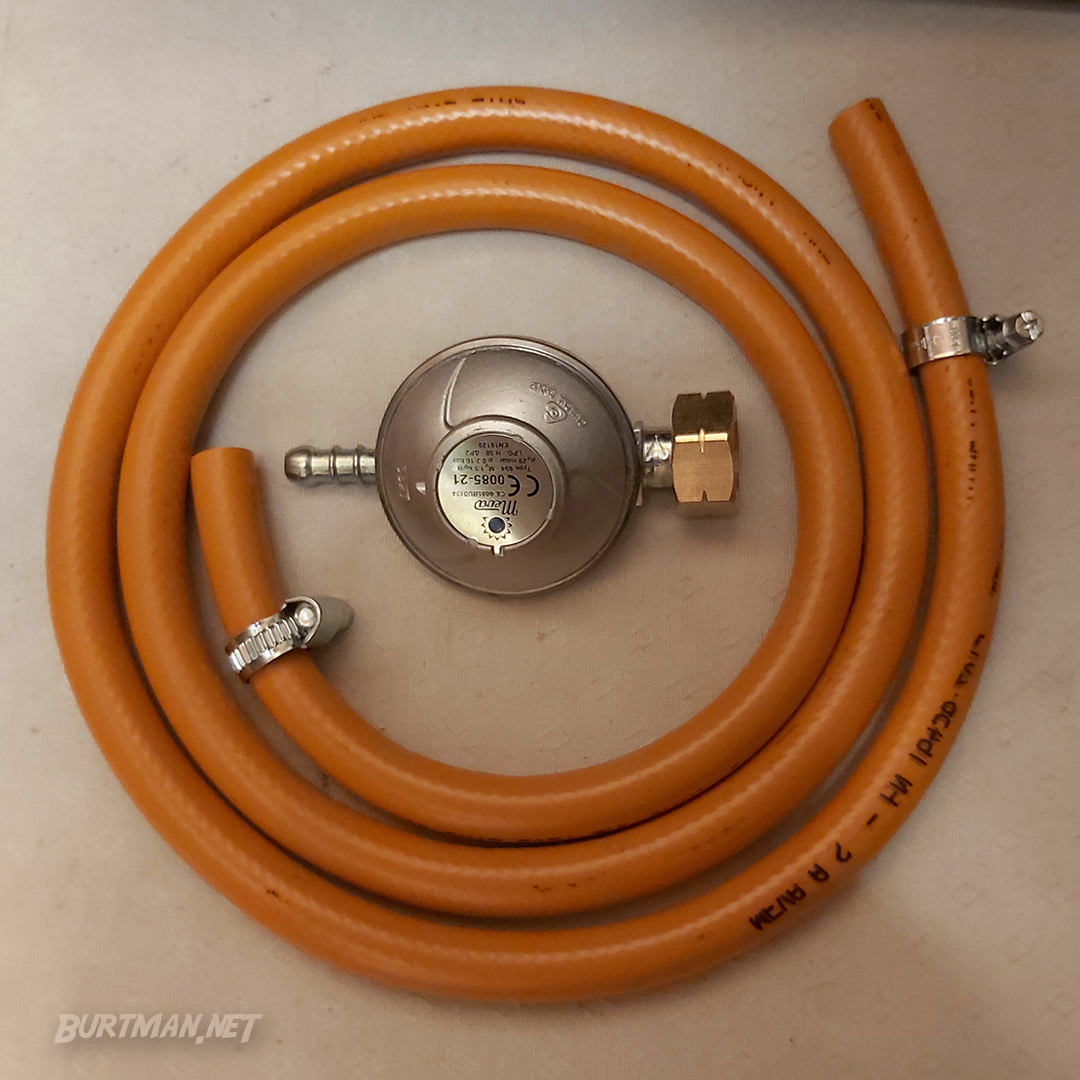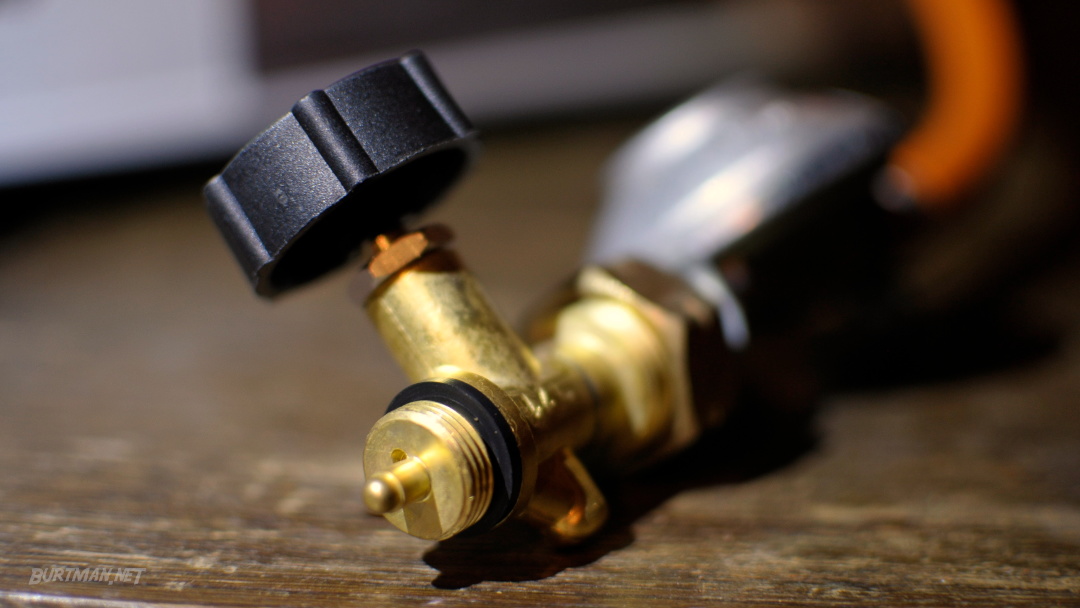Fit Your Gas Bottle

Updated:




Unless you have a hefty electrical system, you're most likely going to choose gas as a fuel for cooking and [possibly] heating. With the obvious safety concerns laid aside for a moment, let's look at some practicalities.
Choosing A Bottle Size
Gas bottles are big and heavy. Having a 10kg bottle in your van is going to take up a fair amount of space under your counter. A 5kg bottle is a better option for most people, although it's not quite as good value for money when you buy the bottle in the first place. Under normal use (cooking a couple of meals and a bunch of hot drinks throughout the day), a 5kg bottle will last one person anywhere upwards of 2 months, with refills being very affordable (over here, around €10). Over the course of my last road trip (~ 4 months), I used about 2.5kg of gas, costing around €5.

A 10kg gas bottle.
Installation
Fitting your bottle is as simple as finding a safe place to sit it (on a level, solid surface, where it won't get battered) and attaching the pressure regulator.

This thing goes on in the opposite direction from what you probably expect. Tighten it counter-clockwise. Jam that sucker up like your life depends on it (because it literally does). The pressure in a full bottle is going to be somewhere around 26bar. This valve reduces the pressure at the outlet to around 300mbar, which is safe for use with all standard gas hobs, fridges and heaters.
Tie the bottle in with a cargo strap or other solid attachment, to ensure that it can't fall over or move around, when you're out on the road. Then, simply attach the other end of the regulator hose to your hob, heater or other gas appliance and tighten the jubilee clip firmly. Give it a wiggle to make sure it doesn't move.

The fitting at the appliance end, secured with a jubilee clip (very snugly, indeed).
Note: If you use a small gas bottle (2kg, for example), you may find a completely different connection, with a ball bearing and no valve.

A 2kg gas bottle without a valve.
The pressure stop looks like this:

I mean, it is a valve of sorts, but not the type you find on almost every larger bottle.
If this is what your bottle looks like, you need to buy an adapter tap, which fits to the pressure regulator at one end and looks like this at the other:

IMPORTANT: Connect and disconnect your gas bottle outside. Do NOT do this in a closed space. Your bottle is going to leak gas.
You know when you pump up your van tires at the fuel station, and as you remove the pump, a bit of air escapes? Same deal, here. You're going to press your gas tap down onto the ball bearing and screw it in as quickly as possible (maybe clockwise, depending on the bottle manufacturer). As soon as you press on the ball bearing, gas is going to start escaping, and it's under a lot of pressure, so there will be a fair bit of it. I'd do this with gloves and eye protection and take a deep breath, first, to avoid breathing any gas (it's not good for you, so I'm told).
Once the tap is fitted and the gas has stopped leaking, tighten the tap as firmly as you can tighten it by hand, then attach the pressure regulator to the top of the tap. This also goes on counter-clockwise, in most cases. Use  Mole Grips, an
Mole Grips, an  Adjustable Wrench, an
Adjustable Wrench, an  Adjustable Spanner, or the correctly-sized
Adjustable Spanner, or the correctly-sized  Spanner to tighten this as snugly as you can. Remember, the seal needs to be air-tight, so don't be shy. You only need to stop before you think you're going to break something.
Spanner to tighten this as snugly as you can. Remember, the seal needs to be air-tight, so don't be shy. You only need to stop before you think you're going to break something.

Using mole grips to secure the pressure regulator to the gas tap.
With everything fitted, put your ear up to the bottle and listen for hissing (you shouldn't hear any). Then give it a quick sniff to make sure there's no gas smell around the fitting. It is possible, after all, that any part of the gas line could be defective, although you should definitely not be using such parts.
When you're satisfied, install the bottle back into the van and make yourself some tea to try it out.
Assuming you don't die in the resulting fireball, you've successfully fitted your gas bottle.
Sign In To Leave A Comment
There are no comments marked as public for this item.
Stay Up To Date





 Fire, Cooking, Heating & Gas
Fire, Cooking, Heating & Gas Read around 2,000 times
Read around 2,000 times For Everyone
For Everyone